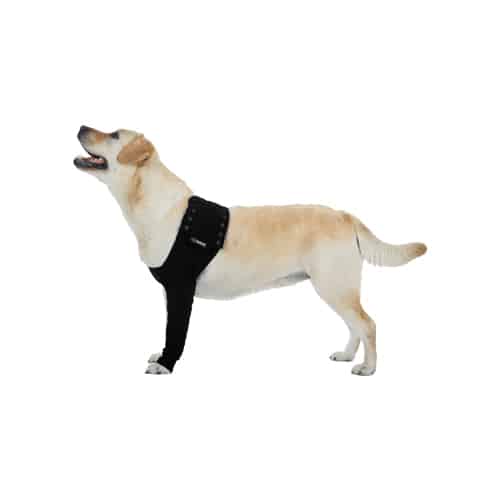Dogs are susceptible to minor injuries like their owners such as cuts scrapes grazes or burns.In an ideal world we might all run to the vet, but this is not always practical or affordable, so what can we do that will not cause our furry friends any more distress than they may already be experiencing?
Can you put Neosporin on a dog? Yes, you can, with the proviso that you cover the ointment or spray applied with a suitable cover or use a protective cone cover to stop your pet from licking the area where it has been applied. This is particularly important in small dogs (and cats).
Neosporin uses Neomycin Sulfate. Neomycin (not Sulfate) has according to some sources previously been linked to liver damage in some animals, particularly cats. Thus, as a small dog is sometimes no larger than a cat, I feel it is safer to cover the application to stop ingestion through licking (see How to Apply below).However, as a precaution I would apply this rule to any dog, regardless of size.

All dogs are susceptible to minor injuries and are not immune to being cut, scraped, or burned. The application of these creams, sprays and ointments to cuts in the skin is not going to be absorbed directly to the liver thus making them safe to use on dogs.
What is Neosporin?
Neosporin can be used in various situations to help keep your dog happy and healthy. It is a topical antibiotic ointment that helps prevent and fight infections. The active ingredients are polymyxin B, neomycin sulfate, and bacitracin, which bind to stop the growth of bacteria.

Keep in mind that Neosporin is a brand and that there are other topical antibiotic ointments that you can also use in your pets. A very close alternative to Neosporin is polysporin, a product that does not contain neomycin, an ingredient to which 10% of the population is allergic. There are also some natural alternatives that you can use on your dog, including Curoxen and Burt’s Bees Res-Q Ointment.
How to Apply Neosporin to dogs
If necessary, after consulting your veterinarian, you can apply Neosporin to your dog in the same way you would with a human. Clean the affected area carefully by rinsing it with warm water and a drop of soap, if necessary. After gently drying, apply a thin layer of the antibacterial ointment over the affected area and then cover it with a pet-approved bandage. Try the Nurtured Pets anti-aging strip prevention bandage , the Nutri-Vet bitter pet bandage, or the PawFlex MediMitt disposable dog bandage.
Remember you need to try and stop your dog from licking the applied ointment.

The bandage will prevent bacteria from entering the wound. It will also prevent your pet from licking the ointment, which they will be eager to do! You can also have your pet use a cone for a few days to avoid touching it excessively. Change the bandage at once or twice a day, and you should see an improvement within 24 to 72 hours.
What is the advantage of using Neosporin in your dog?
Many veterinarians still find that the benefits of Neosporin and similar products outweigh the risks. Antibacterial medications in the ointment will help prevent the wound from becoming infected, and potentially help it heal faster. This is not an insignificant benefit since even minor injuries can cause severe and systemic diseases.
Besides, ointments with triple antibiotics provide a small measure of protection for the wound, by protecting it from dirt and debris. They can even help prevent flies and other insects from visiting the wound and spreading bacteria or parasites.
Alternatives to Neosporin
Wash the cut/abrasion with a mild salt water solution (1 tspn salt dissolved in 500ml hot water) allow to cool before use. Then apply Petroleum Jelly. Cover appropriately.
Veterycin Plus Antimicrobial Wound and Skin Care See their products here






